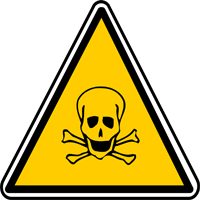 Smart Citations
Smart CitationsSee how this article has been cited at scite.ai
scite shows how a scientific paper has been cited by providing the context of the citation, a classification describing whether it supports, mentions, or contrasts the cited claim, and a label indicating in which section the citation was made.
Severe lactic acidosis from acute cyanide poisoning after intentional amygdalin ingestion in a teenager
Cyanide poisoning via the oral route is a remarkably rare entity in the United States. Though acute toxicity from this poison may present with classic signs and symptoms (smell of bitter almonds on breath and cherry-red skin), these signs are frequently not clinically observed in the intoxicated patient, making it low on the routine differential diagnosis leading to both diagnostic and therapeutic challenges for the bedside clinician. This is a case of a 17-yearold male with a history of depression who presented to the Emergency Room (ER) with altered mental status, abdominal pain, and emesis. A severely elevated and worrisome lactic acidosis triggered the ER’s septic shock bundle and algorithm, but further investigation ultimately led to the unifying diagnosis of intentional cyanide poisoning.
How to Cite
PAGEPress has chosen to apply the Creative Commons Attribution NonCommercial 4.0 International License (CC BY-NC 4.0) to all manuscripts to be published.

 https://doi.org/10.4081/ecj.2020.8985
https://doi.org/10.4081/ecj.2020.8985





